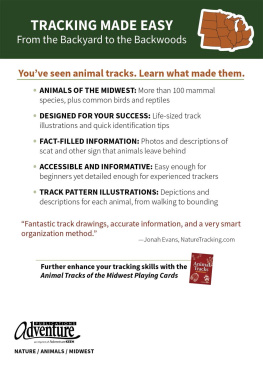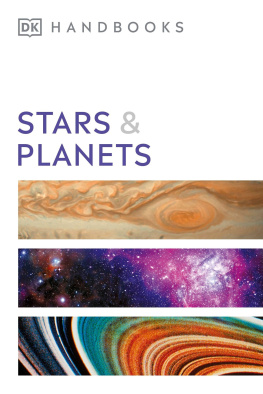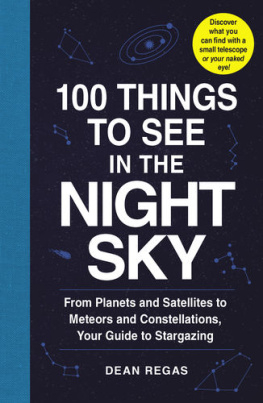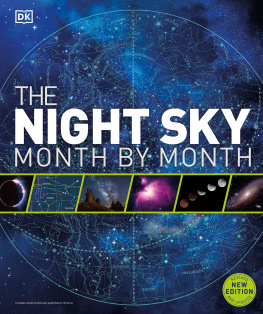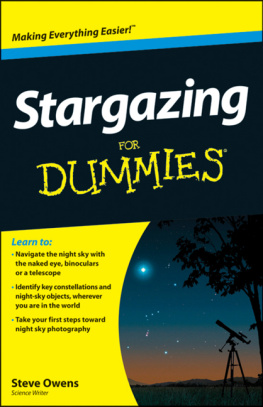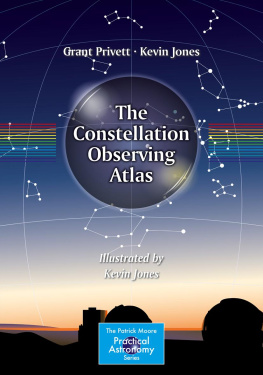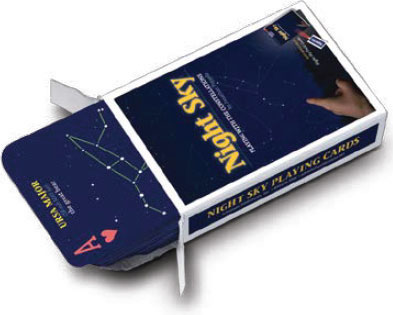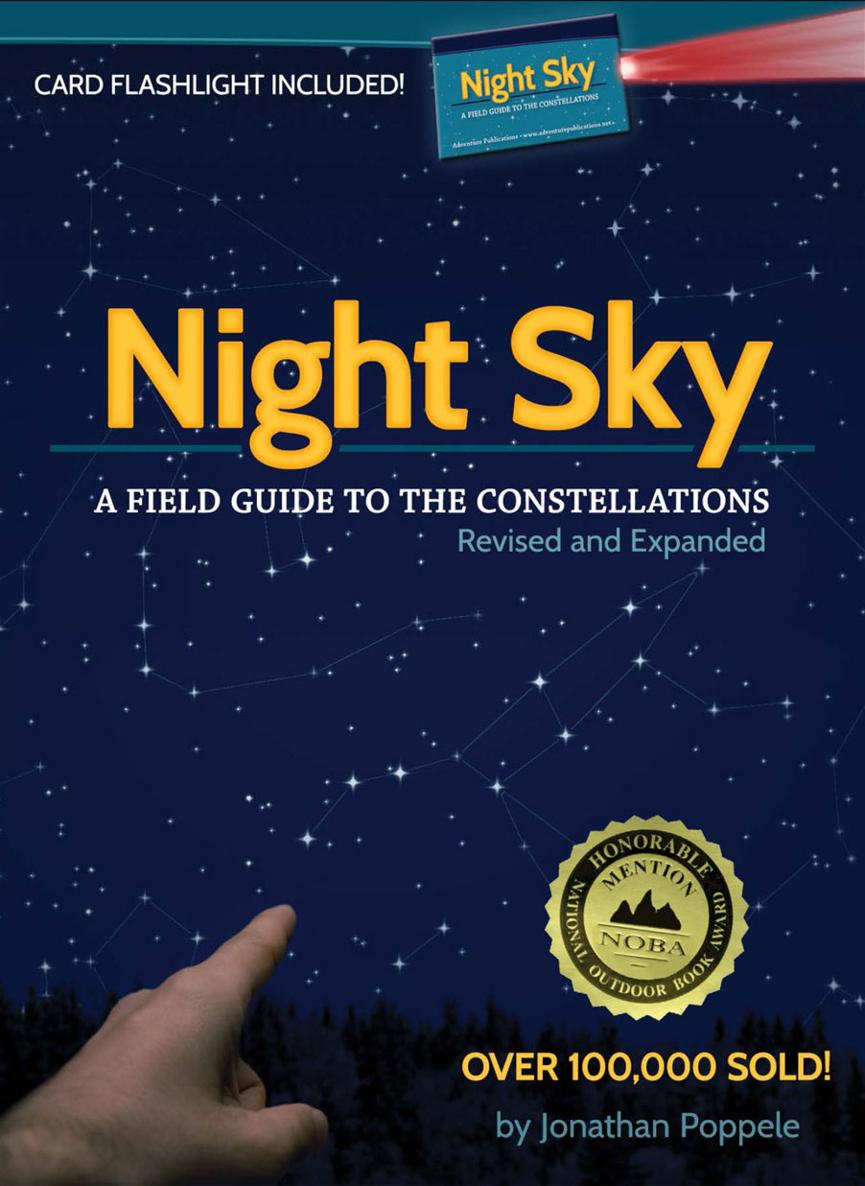

ACKNOWLEDGMENTS
To my brother, Eric, for a lifetime of inspiration.
Thanks to Jon Young, for his inspiration and guidance in helping connect people to nature. Thanks to Larry Rudnick for sparking my interest in astronomy and introducing me to the art of teaching. Thanks to the members of the Minnesota Astronomical Society (MAS) for their tremendous support of stargazing, for the opportunities they have given me over the years, and for their continued interest in this project. Special thanks to past MAS board member Russ Durkee for reviewing the first edition of this book. Thanks also to the countless professional and amateur astronomers whom I have never met but who have generously shared their time, talents, and expertise. In particular, I offer a special thanks to Torsten Bronger for his excellent PP3 software used to create the star charts for this book; to Wordpress user Simontelescopium for the AstroExcel spreadsheet Ive used for untold numbers of calculations; to Fabien Chreau and the team of developers at Stellarium for their amazing software; and to Axel Mellinger of the University of Potsdam, Germany, whose beautiful full-sky Milky Way panorama serves as source data for both PP3 and Stellarium.
Edited by Brett Ortler
Cover and book design by Jonathan Norberg
Photo
Revised and expanded 9th printing, 2018
Copyright 2009 and 2018 by Jonathan Poppele
Published by Adventure Publications
An imprint of AdventureKEEN
(800) 678-7006
www.adventurepublications.net
All rights reserved
Printed in China
ISBN: 978-1-59193-229-1; eISBN: 978-1-59193-614-5
TABLE OF CONTENTS
Introduction
About This Field Guide
How to Use This Book
Sample Pages
A Brief Introduction to Stargazing
Light Pollution Map and the Bortle Dark Sky Scale
Frequently Asked Questions About Stargazing
The Constellations
The Spring Sky
The Summer Sky
The Fall Sky
The Winter Sky
The Southernmost Sky in Brief
Additional Information for Stargazers
Atmospheric Phenomena and Manmade Objects
The Solar System
Deep-Sky Objects
Planet Location Tables
List of Prominent Meteor Showers
List of the Brightest Stars
List of Constellations
List of Asterisms in This Guide
List of Deep-Sky Objects Visible to the Naked Eye
Glossary
Helpful Resources
About the Author
ABOUT THIS FIELD GUIDE
Few things are as awe-inspiring as the starry sky on a clear night. Stargazing is a venerable pastime that still evokes wonder and amazement. For ancient civilizations, the stars served as clock, calendar, and compass. Storytellers linked myths and legends to the stars, helping to preserve cultural knowledge and wisdom. While we no longer depend on the stars to forecast the season, find our way, or preserve our culture, stargazing is still a source of awe and wonder. It is a unifying, humbling experience that connects us to nature and puts our tiny place in the universe in perspective.
Stargazing Is Accessible for Everyone
Stargazing is one of the most accessible activities for nature lovers. Wherever we are, we can step outside on a clear night and gaze into the distant universe. We can marvel at all modern science has learned about the distant objects we see, while still enjoying the stories told by ancient peoples. Whats more, while it can be difficult to find family activities that engage the young and old alike, everyone loves stargazing; children are awestruck, while the elderly see the stars as familiar old friends. The longer you look at the sky, the more you see. And everybody loves a good story.
A Focus on Constellations
A great way to get started stargazing is by getting familiar with the constellations. Since ancient times, these recognizable patterns of stars have helped people orient themselves to the sky, but until we become familiar with these patterns, searching for constellations can be frustrating. Nothing in the sky looks much like a crab or a bear; instead, there are just tiny points of light. Its challengingthere are so many stars!
Night Sky Makes Identification Easier Because
1) each constellation is featured individually;
2) Night Skys maps and graphs include well-known reference points like the Big Dipper, the North Star, and the horizon;
3) constellations are organized first by season and then by how easy they are to locate.
Useful for the Casual Observer and the Expert Alike
This book is designed for everyonethe organization and design are simple and intuitive. In addition, Night Sky includes a wealth of detailed information for the more experienced stargazer. Each entry gives facts and descriptions of the most prominent objects in the constellation. The back of the book includes information about our solar system, as well as tables to help you locate the planets, observe a meteor shower, or spot a distant galaxy.
Companion Deck of Playing Cards
Weve created a companion deck of playing cards (sold separately) to help you learn the constellations. Each card features a different constellation, and the suit indicates the season in which the constellation is most prominent.
The cards are also ranked by how easy it is to spot a given constellation. Playing with the cards will help you learn the patterns of the constellations without even trying. Not only will you be having fun, but youll also find it easier to identify the constellations when you go out stargazing.
HOW TO USE THIS BOOK
Because the Earth spins on its axis and revolves around the Sun, the constellations appear to move both hour-by-hour and from one month to the next. By providing a few simple steps, Night Sky makes locating them as easy as possible at every time of year and all hours of the night.
Step 1: Choose Your Season
Constellations are grouped together based on the season when they are highest in the evening sky and, thus, easiest to see. For instance, even though Ursa Major is visible throughout the year, it is classified here as a spring constellation because it is highest in the late evening sky in April.
Select the season for your stargazing adventure and turn to that section. For the purposes of this book, use the following seasons:
Spring: Mar 21Jun
Summer: Jun 21Sep
Fall: Sep 21Dec
Winter: Dec 21Mar
Step 2: Choose Your Constellation
Within each season, the constellations are organized from easiest to most difficult to identify. I recommend starting at the beginning of each section and working your way toward the end.
HINT: If you can already locate some constellations such as Ursa Ursa or it might be a good idea to practice with those, just to give you a better idea of how the book works.


